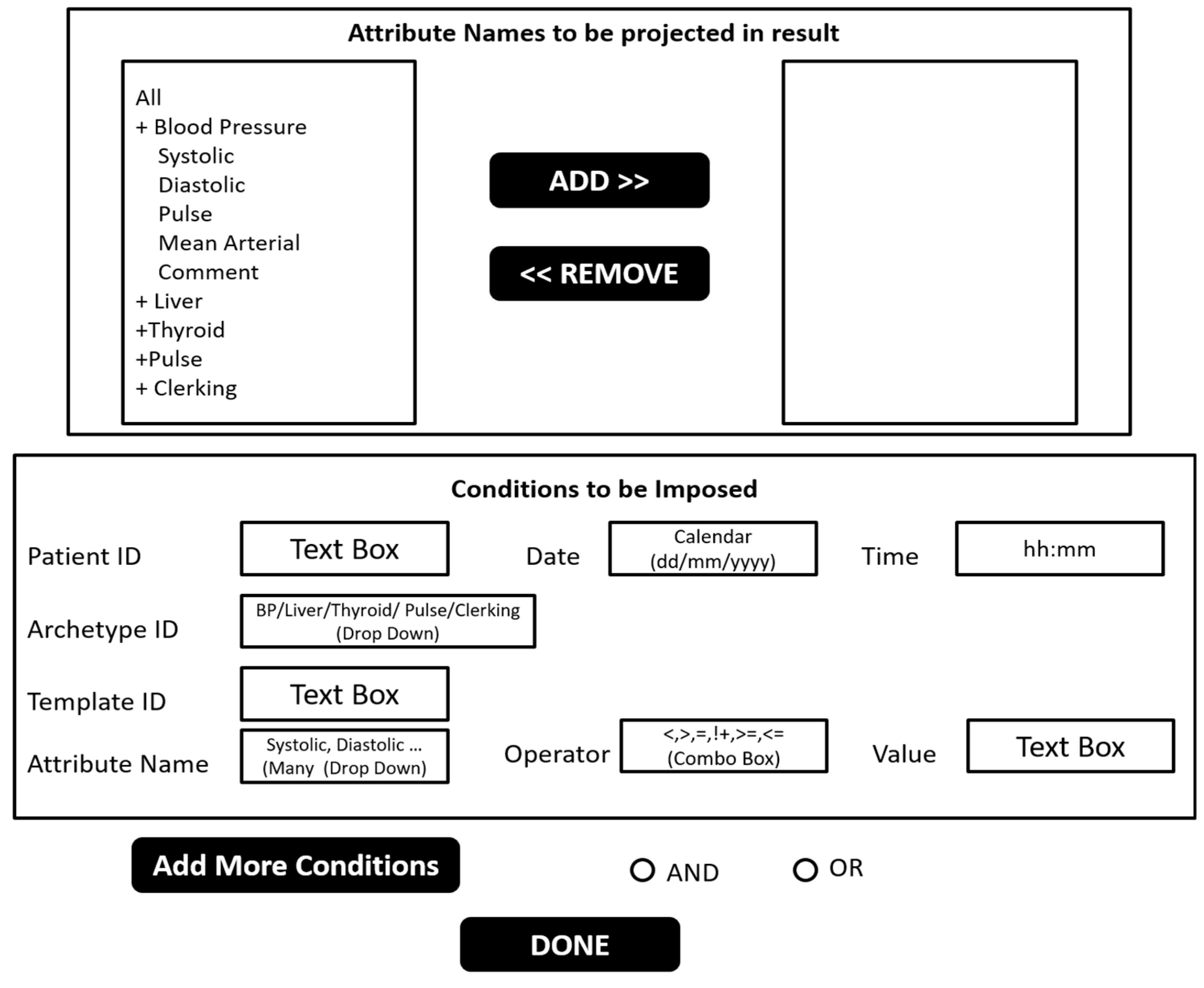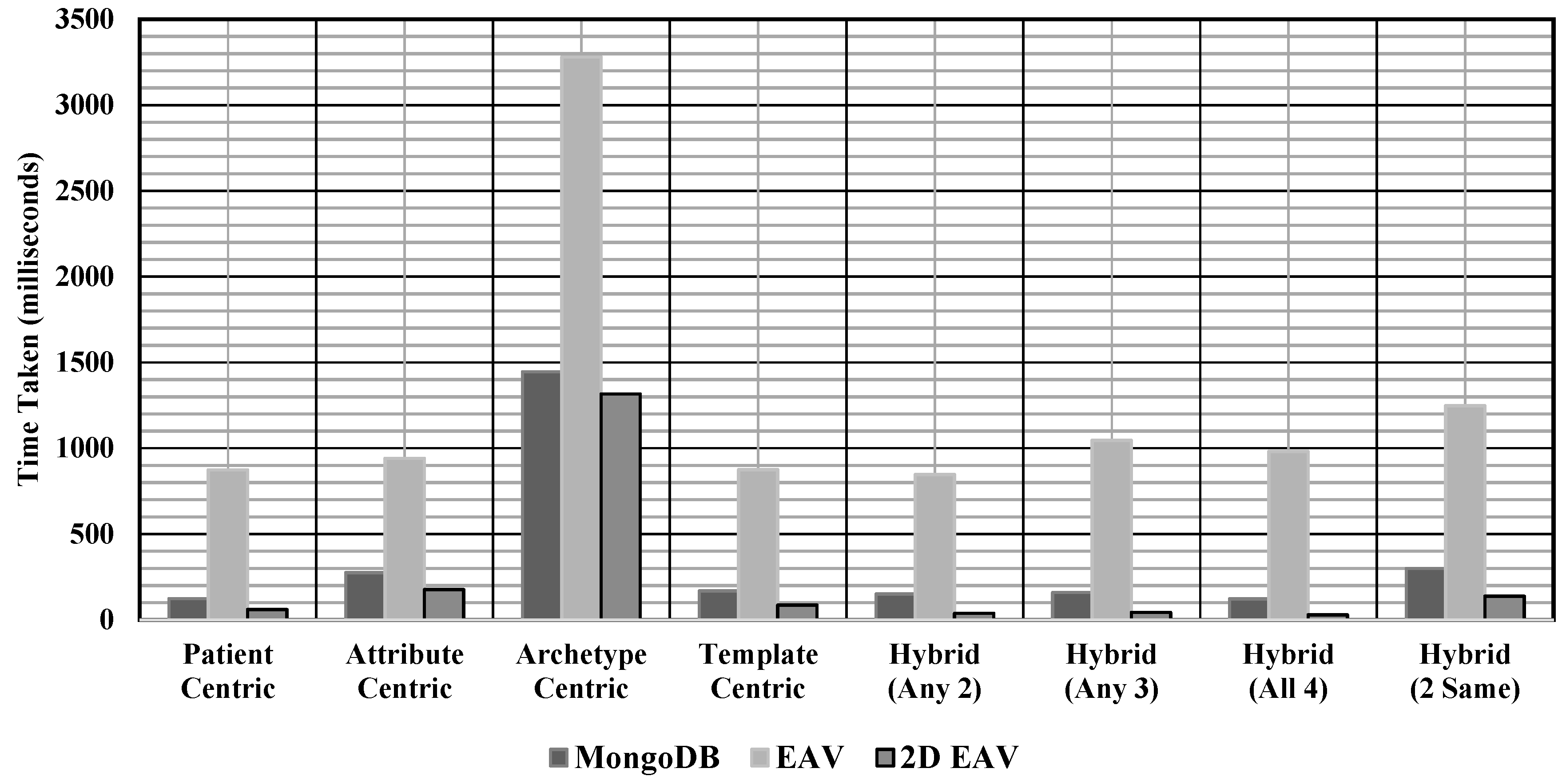



This would depend on the data type, and we discuss how values are stored shortly. At the very least, the attribute definitions table would contain the following columns: an attribute ID, attribute name, description, data type, units of measurement, and columns assisting input validation, e.g., maximum string length and regular expression, maximum and minimum permissible values, set of permissible values, etc. The attribute or parameter: a foreign key into a table of attribute definitions (in this example, definitions of clinical findings).For clinical findings, the entity is the patient event: a foreign key into a table that contains at a minimum a patient ID and one or more time-stamps (e.g., the start and end of the examination date/time) that record when the event being described happened. The latter are particularly useful when the possible values are known to be limited (i.e., enumerable). In this example, the values are all literal values, but they could also be pre-defined value lists. The entries shown within angle brackets are references to entries in other tables, shown here as text rather than as encoded foreign key values for ease of understanding. The following shows a selection of rows of an EAV table for clinical findings from a visit to a doctor for a fever on the morning of 1/5/98. (The situation where the list of attributes changes frequently is termed "attribute volatility" in database parlance.) Finally, the universe of clinical findings keeps growing: for example, diseases emerge and new lab tests are devised this would require constant addition of columns, and constant revision of the user interface. To complicate things, in a longitudinal medical record that follows the patient over time, there may be multiple values of the same parameter: the height and weight of a child, for example, change as the child grows. Clearly creating a table (or a set of tables) with thousands of columns is not feasible, because the vast majority of columns would be null. The attribute definitions table might contain the following columns: an attribute ID, attribute name, description, data type, and columns assisting input validation, e.g., maximum string length and regular expression, set of permissible values, etc.Ĭonsider how one would try to represent a general-purpose clinical record in a relational database. The attribute or parameter: typically implemented as a foreign key into a table of attribute definitions.EAV tables are often described as "long and skinny": "long" refers to the number of rows, "skinny" to the few columns. In an EAV data model, each attribute–value pair is a fact describing an entity, and a row in an EAV table stores a single fact. This data representation is analogous to space-efficient methods of storing a sparse matrix, where only non-empty values are stored. 8.2 SQL Server 2008 and later: sparse columns.7.3 Tree structures and relational databases.6.2 Modeling numerous classes with very few instances per class: highly dynamic schemas.4 EAV/CR: representing substructure with classes and relationships.Insights into relevant literature show how flexible NoSQL databases (document, column, and graph) effectively deal with standardized EHRs data's distinctive features, especially in the distributed healthcare system, leading to better EHR. It discusses different database models' appropriateness for meeting different EHRs functions with different database specifications and workload scenarios. This paper compares the state-of-the-art of the most crucial database management systems used for storing standardized EHRs data. On the other hand, standardized healthcare data modeling is one of the most favorable paths for achieving semantic interoperability, facilitating patient data integration from different healthcare systems. Databases' performance and suitability to health care tasks are dramatically affected by how their data storage model and query capabilities are well-adapted to the use case scenario. With the extensive adoption of electronic health records (EHRs) by several healthcare organizations, more efforts are needed to manage and utilize such massive, various, and complex healthcare data.


 0 kommentar(er)
0 kommentar(er)
